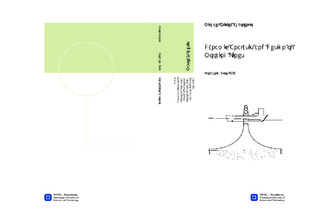| dc.description.abstract | This master thesis presents a comparison study, where the main focus has been to assess if simplified methods can be used for analysing mooring lines for a turret moored FPSO in shallow waters. The MIMOSA program applies frequency domain (FD) methods, which is categorized as a simplified method but with short computation time. Fully non-linear time domain (TD) analysis in RIFLEX, which is a time consuming process, accounts for all non-linear effects, and was assumed throughout this thesis to yield the best results. It was also necessary to perform mooring line analysis in SIMO to be able to isolate different effects between the three computation programs. The results were then used to explain the differences between the finite element method in MIMOSA (MIM-FEM) and RIFLEX (RIF-FEM). The main focus throughout this thesis has been on the leeward line because this line will experience large dynamics, and it will also be the critical line for fatigue damage. The windward line has mainly been used to compare with the leeward line. For fatigue damage the most important parameters are the standard deviation (STD) of low- and wave-frequency tension (LF and WF).When performing a comparison study it is important to assure that the model in MIMOSA, SIMO, and RIFLEX are equivalent. This means that line characteristics, restoring force characteristics, environmental forces, motions, equilibrium position, and pretension are the same for all programs. In MIMOSA and SIMO all the 12 mooring lines were modelled, while only the windward and leeward lines were modelled in RIFLEX. Because RIFLEX needs to get prescribed motions from SIMO, most of the comparisons in verifying the model were made based on results from MIMOSA and SIMO.Comparing the mean equilibrium position between MIMOSA and SIMO exceeded the acceptable range of 5% in the model verification process. This difference arises because the iteration process in SIMO did not find the exact equilibrium position. This resulted in a residual tension force. By performing simple hand calculations, this difference equalled the difference in mean equilibrium position between MIMOSA and SIMO and was therefore acceptable. In the end one could conclude that all the models were equivalent, and could thus be used for further analysis.The programming part for this thesis was quite time consuming. For every program (MIM,SIM,RIF) a batch script was made, which then was combined together with one main batch script. The various analyzes could then be carried out from this main batch file automatically, and Matlab was then used to post process the results.The results showed that a quasi-static representation is acceptable when calculating the STD of LF tension. The difference between MIM-FEM and RIF-FEM for STD LF tension was 0,13% for the leeward line, and -3,58% for the windward line, meaning that MIM-FEM slightly under predicts the STD of LF tension for the windward line.For the turret moored FPSO analyzed in this thesis, a quasi-static representation of the mooring lines is not recommended for the leeward and windward line because the STD WF tension will be too conservative. The difference between the simplified FEM in MIMOSA and the fully non-linear TD analysis in RIFLEX was -22,48% for the leeward line, and -16,66% for the windward line. The difference here is mainly caused by the linearization methods used in MIMOSA to account for geometrical stiffness and dynamic effects (drag and inertia forces acting on the mooring line). Using the simplified FEM in MIMOSA one will under predict the STD of WF tension for the windward and leeward line, and therefore under predict the results in the estimation of fatigue life in the mooring lines. | nb_NO |

